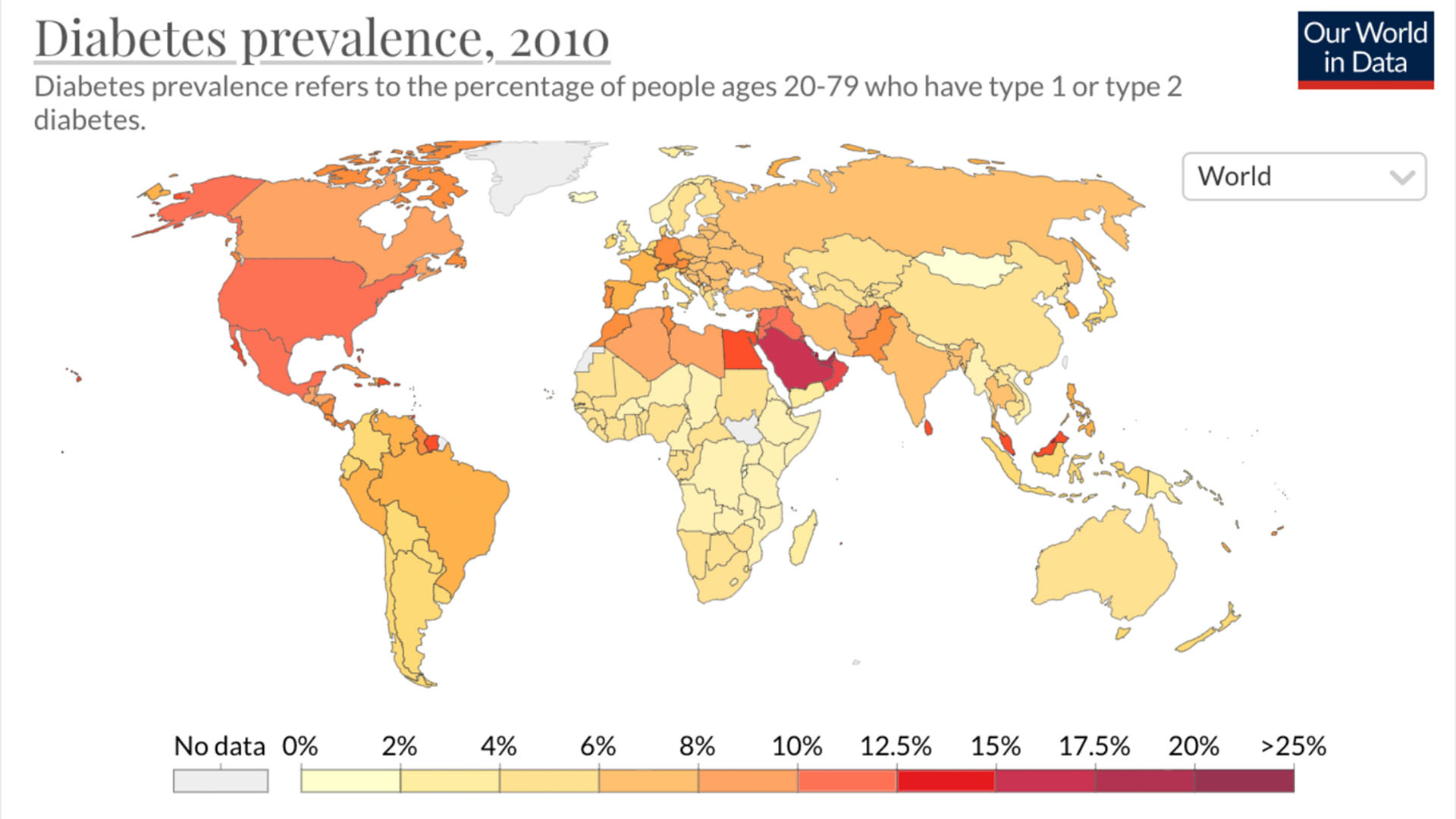Data
For this project, I want to collect the data on the incidence rate of diabetes and economic factors, goods imports (BoP, current US$) in Latin America in different regions. During the past decade in Latin America, the growth of a middle-class population engendered the rise of sedentary lifestyles and unhealthy diets, which have increased the incidence of risk factors for diabetes.

Introduction
In recent years, the prevalence of diabetes has been increasing, and diabetes has become a worldwide public health problem, seriously affecting people's quality of life. I'll share a set of data with you: In 2019, Approximately 463 million adults (20-79 years) were living with diabetes. According to the World Health Organization, diabetes is the second-most common cause of death in Mexico and one of the top 10 causes of death globally. It is a non-communicable disease, wherein the plasma glucose levels increase over the regular limit for a healthy person.

Incidence rates of diabetes in Latin America in different regions in 2010 and 2019
From the data I have collected, it shows the incidence of diabetes in Central Latin America is 3 times (2.8%) higher than the Andean Latin America Region and 2 times higher than Southern Latin America. The higher incidence in Central Latin America can be a consequence of the statistical impact that Mexico has in this region where diabetes is considered the major health problem of the country. Moreover, in Central Latin America the fast food influence is higher than in other regions of Latin America, generating diet-related health problems and therefore an increase in the incidence of diabetes.

| Country | 2010 | 2019 |
|---|---|---|
| Mexico | 10.8 | 13.5 |
| Panama | 9.6 | 7.7 |
| Colombia | 5.2 | 7.4 |
| Costa Rica | 9.3 | 9.1 |
| El Salvador | 9.0 | 8.8 |
| Guatemala | 8.6 | 10.0 |
| Honduras | 9.1 | 7.3 |
| Nicaragua | 10.0 | 11.4 |
| Venezuela | 6.5 | 7.0 |
| Bolivia | 6.0 | 6.8 |
| Ecuador | 5.9 | 5.5 |
| Peru | 6.2 | 6.6 |
| Argentina | 5.7 | 5.9 |
| Chile | 5.7 | 8.6 |
| Uruguay | 5.7 | 7.3 |

Popularity of the brand Coca-Cola in Latin America in 2019
The graph above has shown that the popularity of the brand Coca-Cola in Latin America in 2019, by country (in million Consumer Reach Points). From the graph above we can conclude the following: Coke is so popular in Latin America. Consumers in Mexico as a high economic country reach the most points of coca-cola compared with other countries. Therefore, we can see that Mexico has a higher incidence rate of diabetes perhaps is because of the higher consumption of sugary beverages.
Goods imports (BoP, current US$)
The Transnational Beverage Corporation is one of the largest and most economically powerful multinational food and beverage companies in terms of sales and market capitalization. The industry is highly concentrated globally, with two U.S. companies, Coca-Cola and PepsiCo, controlling 35.7% and 71.7% (by value) of the soft drink and carbonated soft drink markets, respectively, in 2014.
The below graph shows that overall all countries in Latin America, the good imports are all increasing from 2010 to 2019. Especially in Mexico, it grows almost 2 times more with 455.83 million US$. The other countries did not increase too much as compared to Mexico. Therefore, we can conclude that Mexico is really taking advantage of good imports and the economy is developing quite fast.



Conclusion
Overall, based on all the graphs above, Central Latin America has the higher goods imports as compared to Andean and Southern Latin America especially Mexico. The Transnational Beverage Corporation is one of the largest and most economically powerful multinational food and beverage companies in Mexico. It could be a reason which leads to a higher incidence rate of diabetes in Latin America.
References
- Works Cited Caribbean, Economic Commission for Latin America and the. “Latin America and the Caribbean Must Support Foreign Investments That Help Close the Productive and Social Gaps in the Region.”
- “The Impact of Diabetes on Latin America – an Analysis of Risk Factors Causing Diabetes and Challenges the Insurance Industry Is Facing | Gen Re.”
